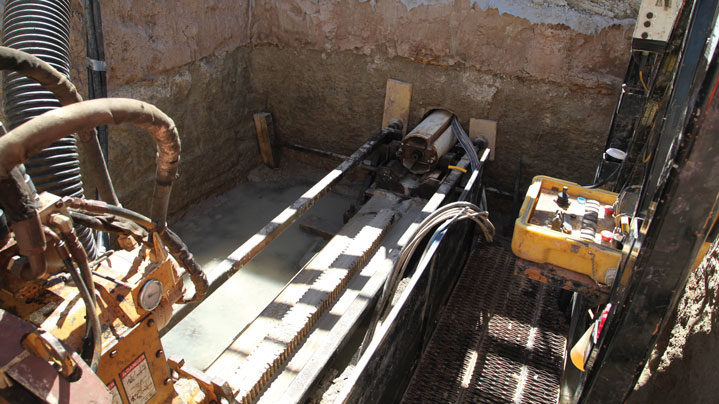Trenchless technology has been quickly growing in popularity due to its vast environmental, cost and time benefits. When selecting which technique, such as microtunnelling or HDD, to use for a pipe installation there are differences that need to be considered. Here, we look at the types of considerations that should be made when selecting the right trenchless solution.
Line of installation
There are many practical considerations when choosing between microtunnelling and HDD for pipe installations. One of the main considerations is the line the pipe needs to take. Microtunnelling machines are built to install pipe in a straight-line from pit to pit whereas HDD is surface launched and is more flexible, allowing for movement of the pipe to incorporate variations throughout the route to avoid existing underground infrastructure.
Managing Director of Edge Underground, Stuart Harrison, said the ability or inability to maneuver through the ground is a crucial consideration.
“Asking a HDD rig to go straight is trying to get it to do something that it fundamentally wasn’t designed to do; the same goes for microtunnelling, it is not designed to incorporate movement in the pipeline. The criteria for a rig for any job needs to be evaluated and decided on prior to beginning installation to avoid lengthy and costly problems moving forward,” Mr Harrison said.
Launching from the surface
A key difference between HDD and microtunnelling is the way they interact with the earth surrounding pipe installations. HDD creates a hole to install the pipe by drilling into the ground from the surface, making it ideal for installations with continuous lengths of pipe. In contrast, microtunnelling is undertaken from below the ground in shafts or pits.
“The nature of being surface launched means that the machine does need to sit back away from the starting point, and the requirement to use a continuous style of pipe means that on the exit point, you also need to have enough room to have your pipe laid out,” Mr Harrison said.
“Whereas, with microtunnelling, you use a shaft to shaft installation, so it can work from an exact point to an exact point, and only those points, with no setup or lay back areas required. This greatly reduces site footprint and is ideal for urban areas where space can be limited.”
Equipment accuracy
HDD rigs primarily have a one per cent error system which means that depending on the depth, one per cent of the depth is likely to be outside of any water and sewer industry standards of accuracy for pipeline installation.
“If you look at industry expectations, a very well-credentialed, experienced HDD crew would commonly expect to achieve +/- 100mm in accuracy, depending on the ground and location system used,” Mr Harrison said.
“Whereas a microtunnelling crew would expect to commonly achieve +/- 10mm accuracy over lines of 120m in length, and be at no point more than 10mm out. Should you require an installation +/- 25mm in accuracy, then really you have no choice but to choose microtunnelling.”
Avoiding existing infrastructure
When considering whether to employ HDD or microtunnelling, the presence of existing underground infrastructure makes microtunnelling the safer option.
“One of the downfalls of HDD when it comes to existing infrastructure is that there needs to be an exit point on the receival end, meaning care needs to be taken in pre-planning to establish a suitable point of exit. HDD also requires excavation to the correct installation depth in the lead in, and when installing continuous pipe need to do exactly the same on the receival end, creating additional chances for existing infrastructure to be damaged,” Mr Harrison said.
Another consideration to be made when considering HDD is the point of exit the technique requires.
“If the line of installation is from an exact location to an exact location and goes across the road and into someone’s property, it’s virtually impossible for a HDD rig to do that job because the exit point needs to go into a property.
“As microtunnelling only requires two shafts it removes this challenge as there is no need for lay back. Furthermore, if the microtunnelling equipment is modular it can be setup to reduce the amount of space for construction.”

